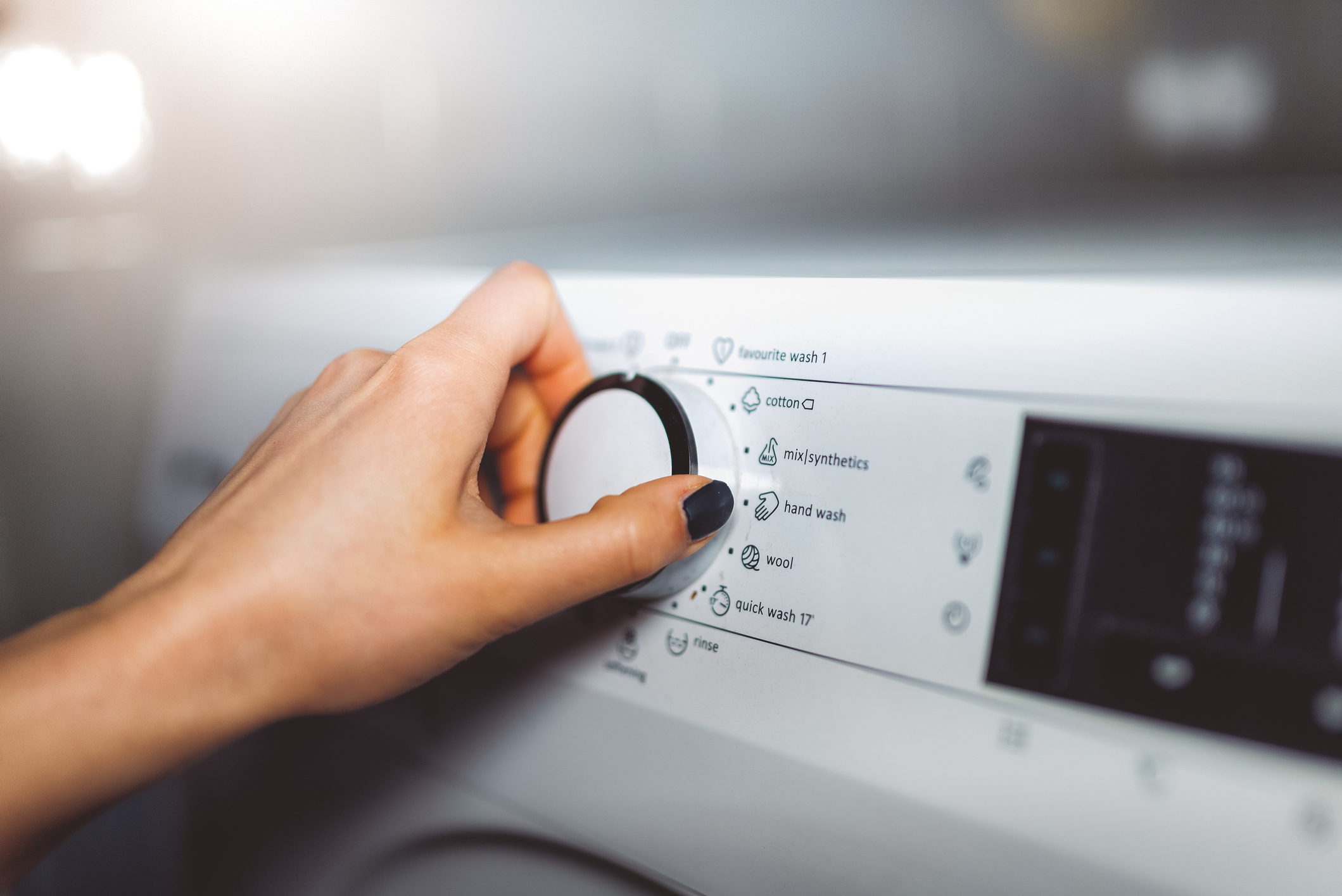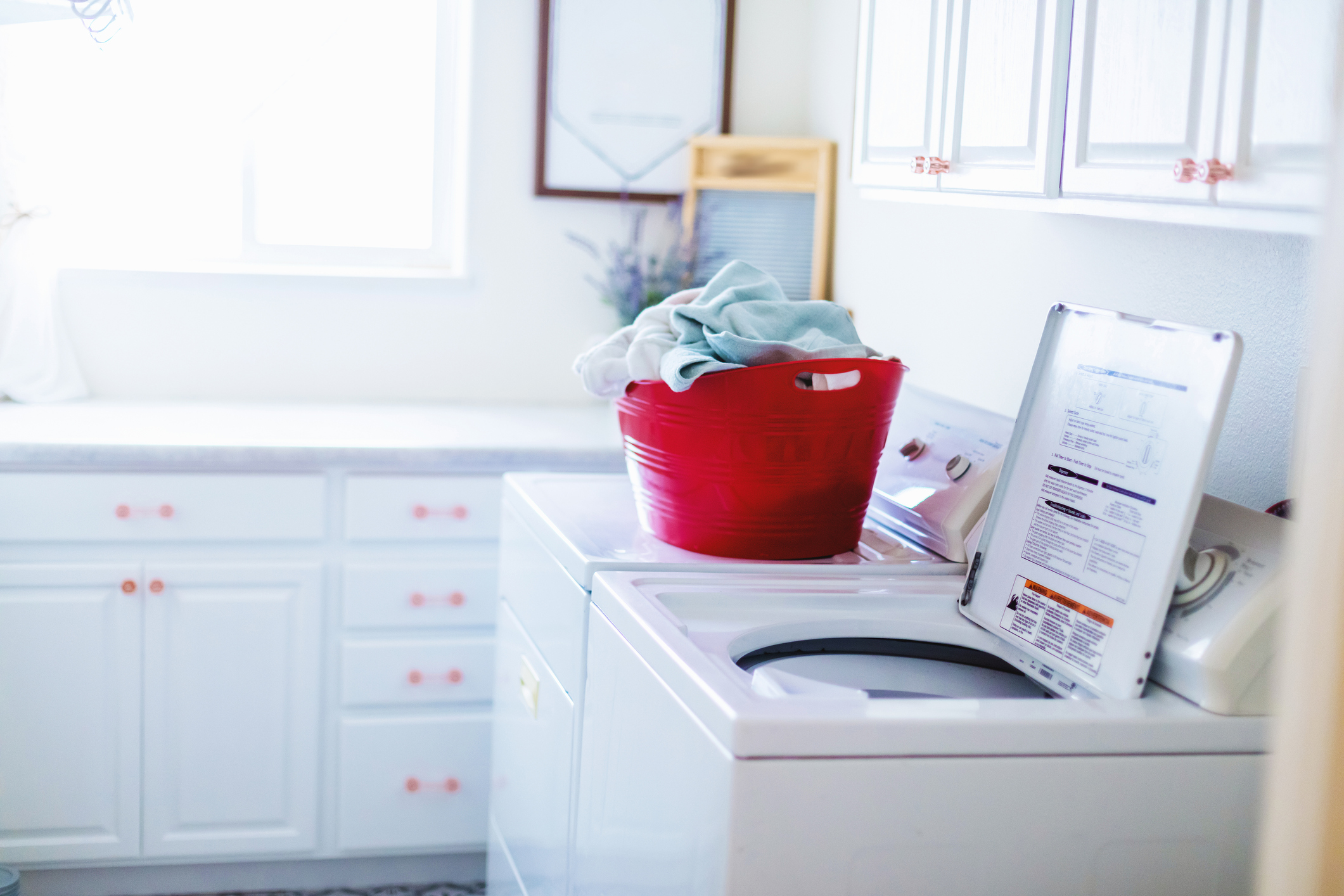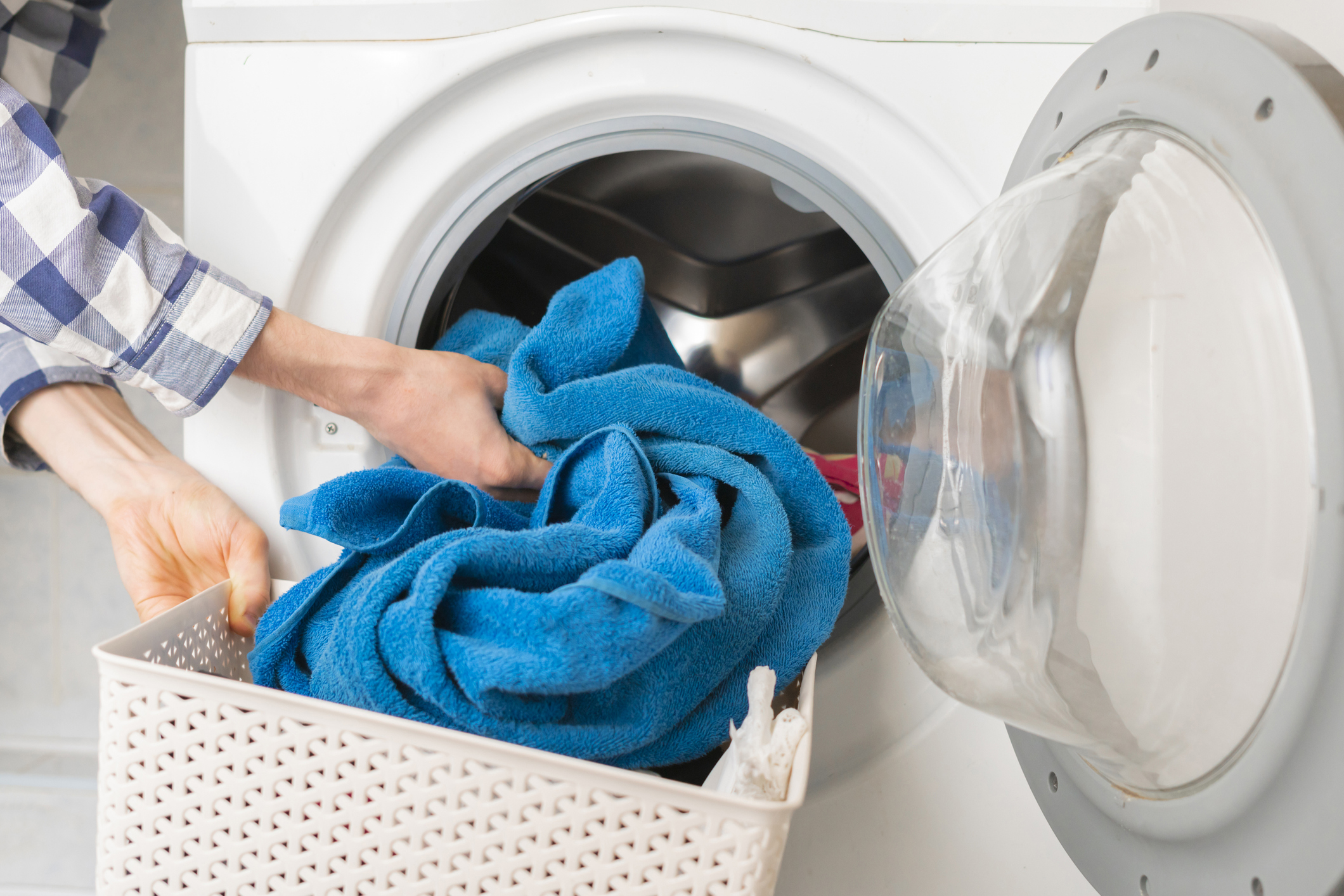Let’s get ready to tumble! We're gearing up for a 12-round throwdown between front-load and top-load washing machines. While this may be a neck-and-neck contest, if you’re looking to buy a new washer, whose corner are you in?
This is only the beginning—consider your needs and which appliance type will best suit your laundry routine. Do you prefer the energy-efficiency of a front-load washer or the cleaning power of a top-load washer with a center agitator? For the longest time, we didn’t have many options when it came to laundry appliances, but now there are washers with more time, space, and money-saving features than ever before.
A big disparity between the two is the way you load and unload each appliance. Front-load washers are at the same height level as their drying counterpart, so it’s easier to transfer your freshly washed clothes into the dryer. However, a top-load washer doesn’t require as much bending or hunching to transfer clothes.
Both front-loaders and top-loaders have their advantages and disadvantages, and that’s why our expert team at Spencer’s TV & Appliance is here to give you a rundown of each appliance so you can be confident in your purchase and knockout laundry day with ease.

Form and Function
Before we break down the key features of washers, it’s a good idea to recap what sets these two washer models apart.
Ease of Use
Even if your washer has a pedestal, there will still be some bending required to transfer your clothes. However, some washing machines are stackable, which can make it a bit easier to transfer laundry in apartments and other smaller living spaces.
Beyond that, one thing to consider is which way the doors swing open. You don’t want anything to obstruct your access to the interior of the appliance. If your laundry room features low shelves or your appliance is located underneath a counter, a top-load washer might not have enough room for the lid to open fully or be able to grant easy access to the control panel. Some appliance brands like Electrolux manufacture products with reversible doors so your washer choice isn’t limited by the layout of your laundry room.
A top-load machine will be placed next to a dryer unless you purchase a stacked laundry unit with a front-load dryer on top. Front-load washers can also be stacked with a dryer to fit into closet laundry rooms if space is a factor. Depending on the fuel type of the appliance, the gas or electrical connections will be the same for both top-load and front-load washers.
Cleaning Power
There are two common types of top-load washers: Those with agitators and those with impellers. A standard agitator model is most likely the washer you grew up with—a tub with a large rotating post in the middle. There are two kinds of agitators: Single-action and dual-action. The single-action models spin to circulate the laundry around the tub, and dual-action agitators feature spiraled fins that work independently to push clothes toward the bottom of the washer.
Impellers are like smaller agitators. They spin your clothing around in the wash drum, but they take up far less space than a traditional agitator. You can find impellers that either have fins like an agitator or ones that are more cone-shaped. A washer with an impeller is typically a high-efficiency top-loader that acts more like a front-loader, spinning at high speeds.
The knock against agitators is the mechanical action in which they use to clean clothes. This operation can be harsh on fabrics, leading to more snags and tangles.
Front-load washers differ because they don’t have agitators at all. They use a tumbling motion to spin clothing in both directions at high speeds, helping to release dirt and other soils from your fabrics. A front-loader is much gentler on your clothing if you run a standard wash cycle, but a high-heat or deep-clean option can still be just as rough on your fabrics.
Cycle time varies for both machine types, depending on the wash size, soil level, and other customizable wash settings. Front-load washers typically clean faster than a top-load, completing a standard wash cycle in around 30 to 50 minutes.

Major Differences
Now that you know a little more about front-load and top-load washers, you’re ready to go the distance with your brand-new appliance. Let's explore the key features and major differences.
Appearance
Both top-load and front-load washers feature similarly stark industrial tones designed for an at-home element. Top-loaders don’t have a door up front, so they tend to have a smoother, more polished look. Front-load washers have glass inserts on the doors that allow users to see their clothing churning inside the wash bin amongst all the sudsy water. While this can be distracting for some, for most users, it’s a good way to check on the progress of the cleaning cycle.
Size
For appliances of the same volume, top-load washers tend to be slightly taller than front-load models, but front-loaders are deeper than top-load washers to account for the agitator inside. Ideally, you’ll want to find an appliance with 4.5 cubic feet of space. An appliance this size will be large enough to fit a king-size comforter or the equivalent of 15 to 20 pounds of laundry.
If capacity is what you desire most, front-load washers are the way to go. Their larger, wide-open wash drum allows for much more laundry to fit in each cycle. Because top-load washers have an agitator, they don’t utilize their space as efficiently.
However, Speed Queen offers extra-large washers in both model types that are near or at the commercial level, allowing you to easily withstand the largest laundry projects.

Water and Energy Use
When front-load washers first started gaining some traction in the industry, people were confused by how little water they used. Users were accustomed to the standard top-load appliance with an agitator that would fill up with water to help your clothes float. But the efficient operation of a front-load washer uses far less water because the drum is lifting and moving the clothes around, so they land in a shallow pool of water instead of mixing around in a drum full of water.
An energy-efficient front-load machine will use around 14 gallons of water, and a regular model might use close to 20 gallons. If you haven’t replaced your washer in over a decade, you can expect a top-load washer to use almost twice as much water, nearly 40 gallons per cycle.
If you see an Energy Star label, you’ll know the machine is using no more than 14 gallons per cycle. Since these models use less water, they are more energy-efficient because it requires far less energy to heat the smaller amount of water they use. When comparing washer models, always look for the Energy Star certification.
Cost
A typical top-load washer will come in around $500 to $800. A high-efficiency impeller washer might be slightly more expensive than the old-school agitator model, but they are still an affordable option. Front-load washers tend to be more expensive, but you will save money in energy costs. $800 to $1,200 is a common price range for this washer model.
You can also save money with front-load or high-efficiency top-load washers because they use less water, so you can cut back on the amount of detergent you use in each cycle. About two teaspoons per wash load is all you need for effective and thorough cleaning.
Easy to Clean?
Your washer cleans your clothes, but have you been cleaning your washer? This is especially important for some front-load models, as the door seal closes tightly to prevent leaks, but that could cause the gasket to develop an unpleasant odor and develop a ring of mold. It’s a good idea to take a soft rag and a non-abrasive cleaner to wipe the door seal every few washes and leave the door open after each cycle so the appliance can dry out.
If you’re focused on cleaning the wash bin, many manufacturers have begun producing machines with a self-cleaning cycle. There are always at-home cleaning solutions to keep your appliances in tip-top shape, but a self-cleaning washer provides the added assurance that your machine and your clothes are clean.

What’s the Verdict?
Front-load washers are better than top-load washers at cleaning your clothes with less wear and tear. They use less water than a standard washer with an agitator, and they have a life expectancy of 11 years. The appearance, washing capabilities, and price point of a top-load washer continue to make it a popular choice, and you can rely on your appliance to last around 14 years.
Ultimately, it will come down to cost and operation. Front-load washers are more expensive to purchase and maintain but offer a more powerful, energy-efficient operation. Top-loaders are the more reasonably priced appliance model, but while the machine saturates your fabrics in a deep clean, you run the risk of increasing your energy and water bill.
Make Your Pick
Now that you know the basics, if you decide to further your search, refer to our blog on our favorite laundry pairs, or take a look at some of the top-rated laundry features from Whirlpool, GE, LG, and Samsung.
If you have any questions or need assistance finding the right washer for your home, contact us at one of our Spencer’s TV & Appliance locations to shop our entire catalog of laundry appliances. Give us a call, chat with us online, or visit us in person.



